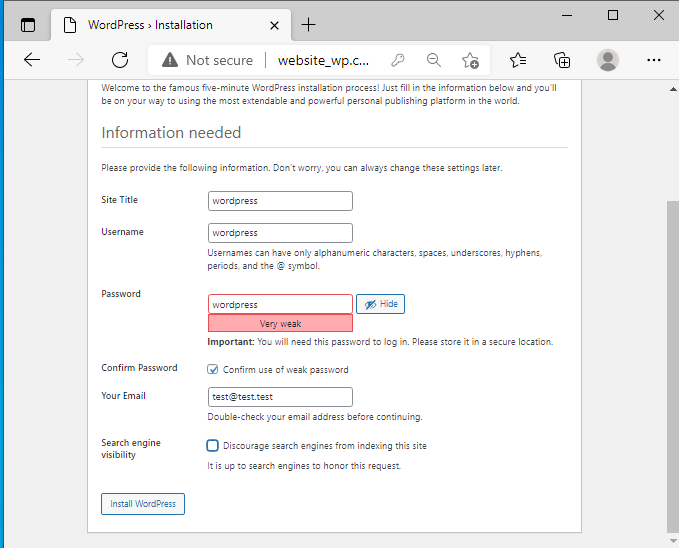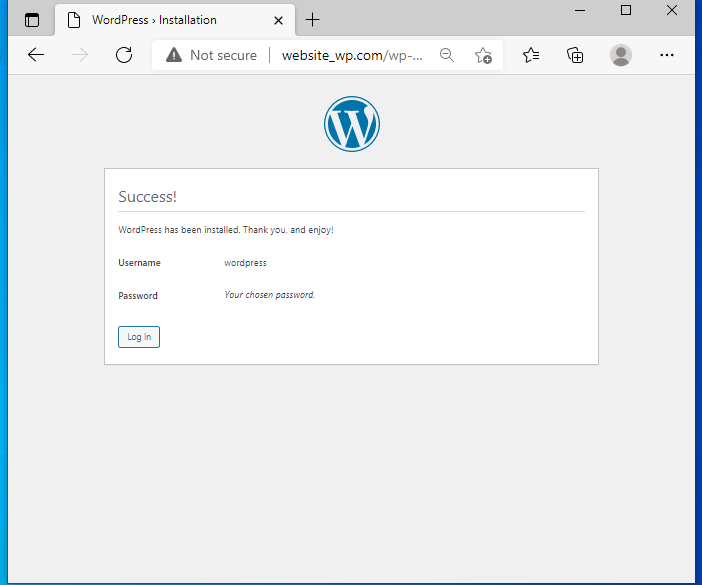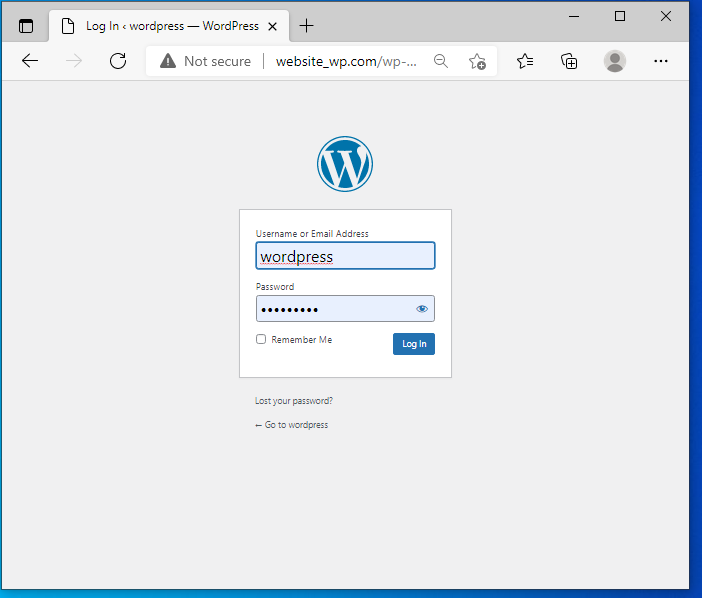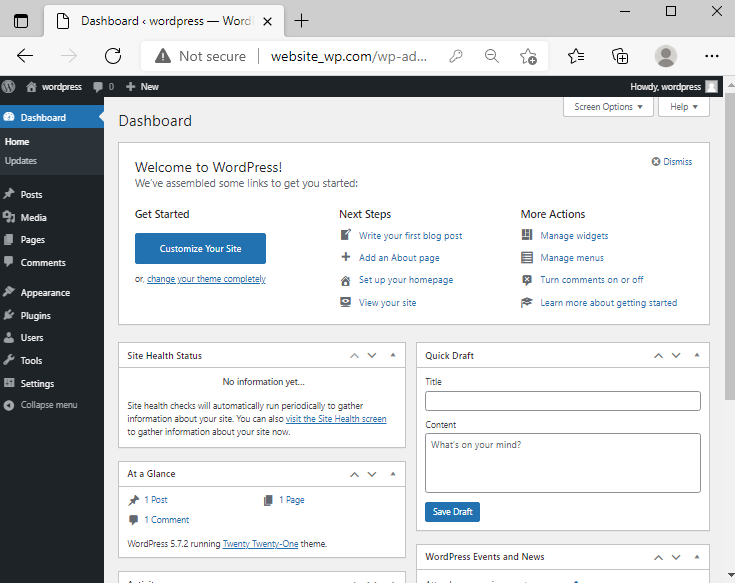Posted :

- so, is this an installation, or what's that?
- yeh, a quick installation, some concepts to catch, some stuff to do, so ...
- let us do it, :P.
- okay, grosso modo, we will be using Cygwin, as the backend for installing our development stack.
- Cygwin, oh sure, I know about this one, it can be downloaded from
here.
- kudos, so what is next?
- so, yeh, you need to start by installing all the required packages, I think.
- cool, and that is what?
- here is a
list of things to install ,
which should be sufficient:
nginx phpphp-bcmathphp-bz2 php-curlphp-exifphp-fileinfophp-gdphp-gettextphp-gmpphp-iconvphp-intlphp-jsonphp-mbstringphp-mysqliphp-pdo_mysqlphp-pdo_sqlitephp-soapphp-sqlite3php-xmlrpcphp-zipphp-zlibmysql-servermysql-server-utilsmysqlpython38nano
-
Pictorial instructions?
- Sure, why not?

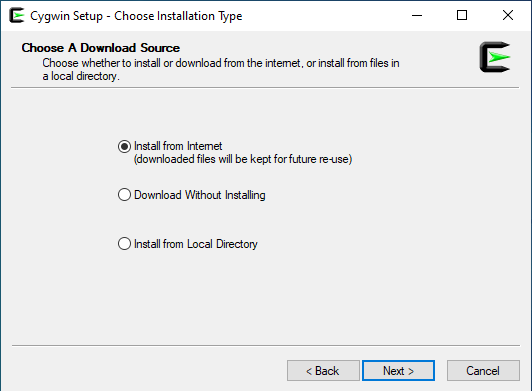


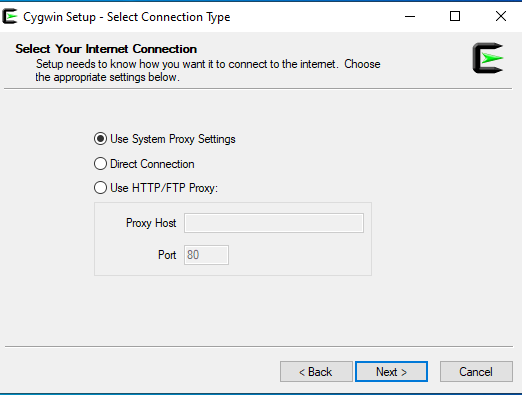
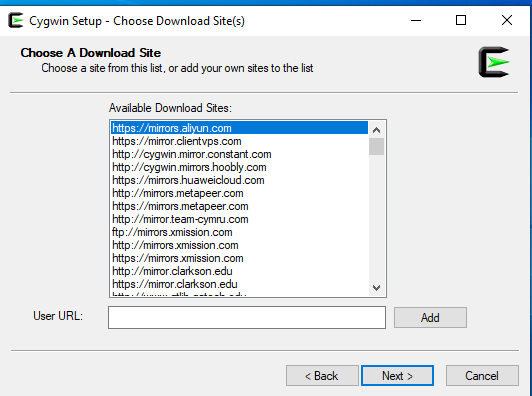

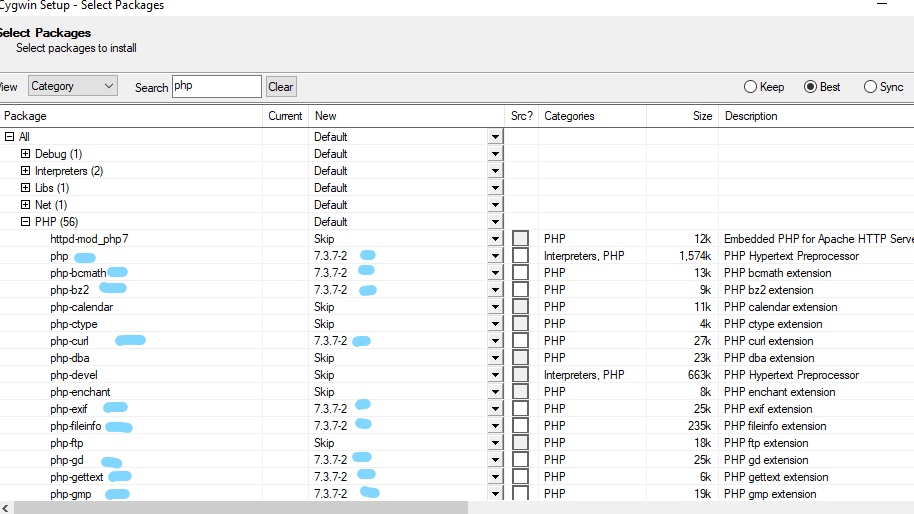
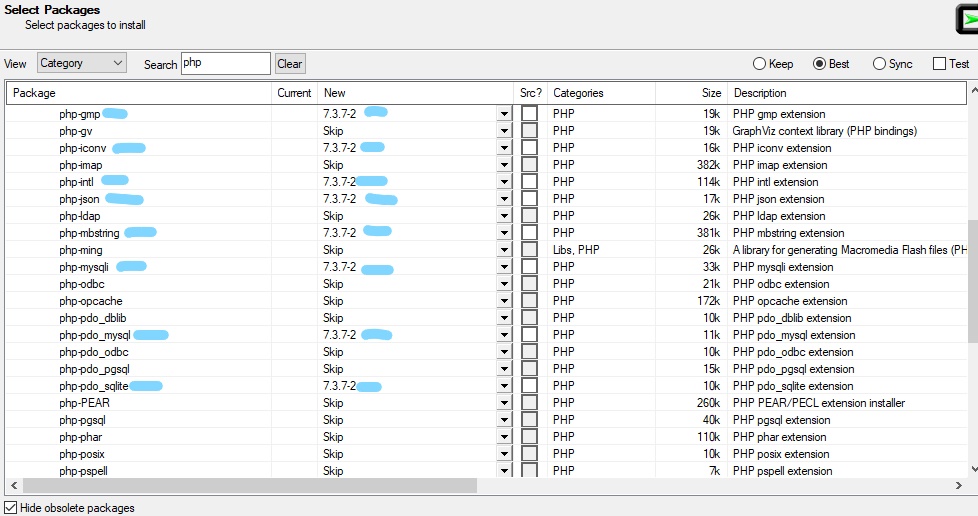


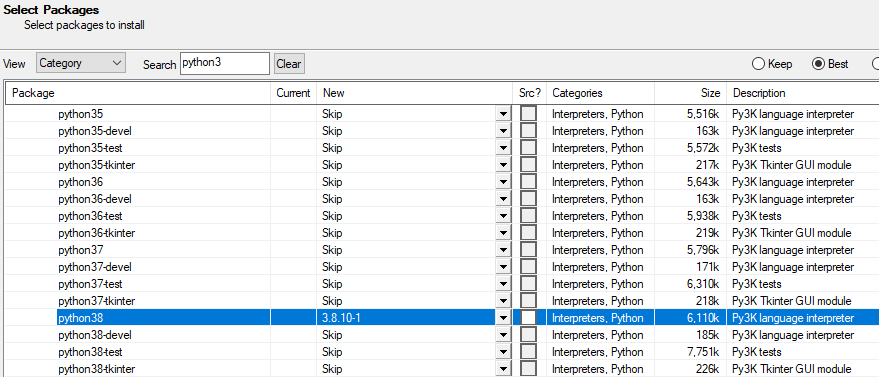


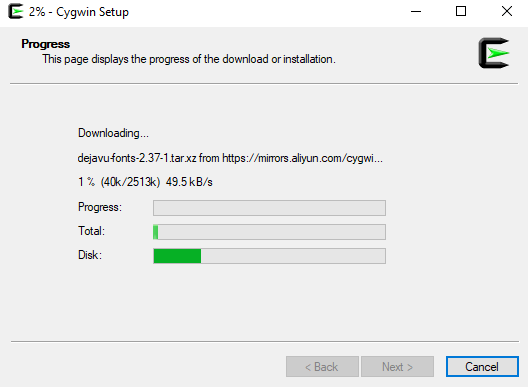
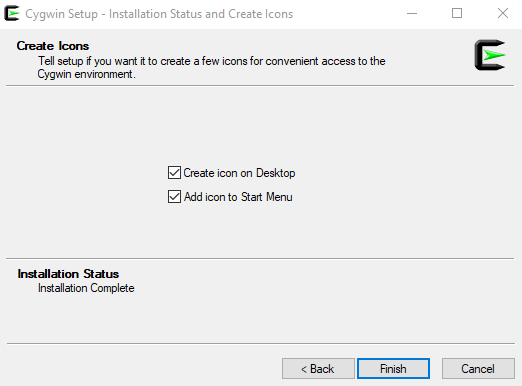

- I guess, we are forgetting something.
- is it that NodeJS thing?
- ah ok, ok, cool!
- Well, this one is easy, just
download
nvm-windows
, install it, choose
the node version ,
you want it, install it, and set it for use.

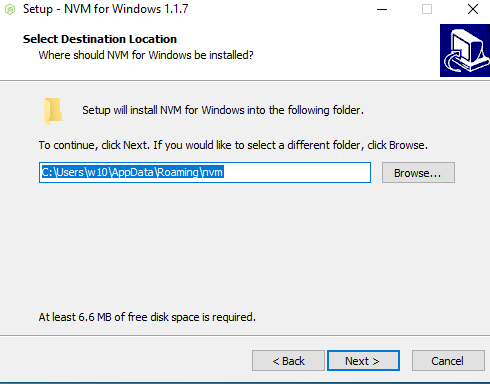

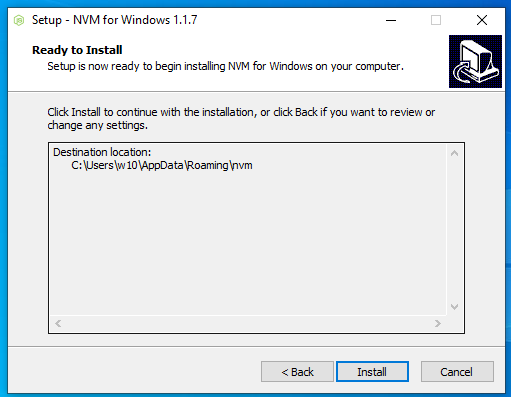
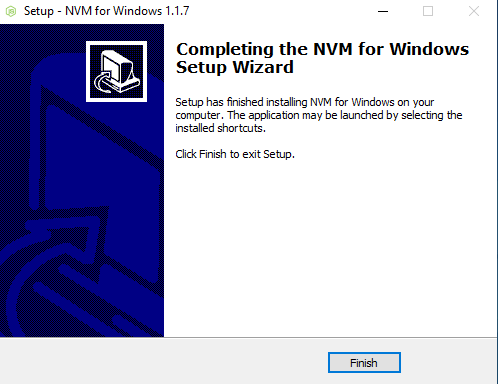
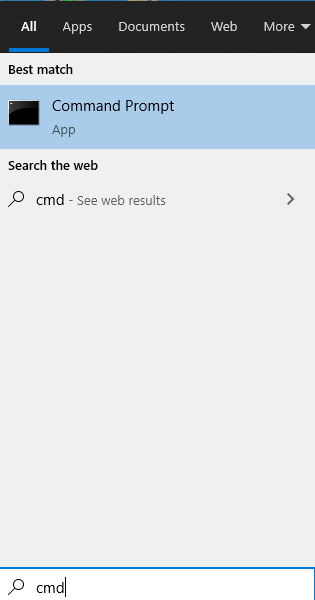
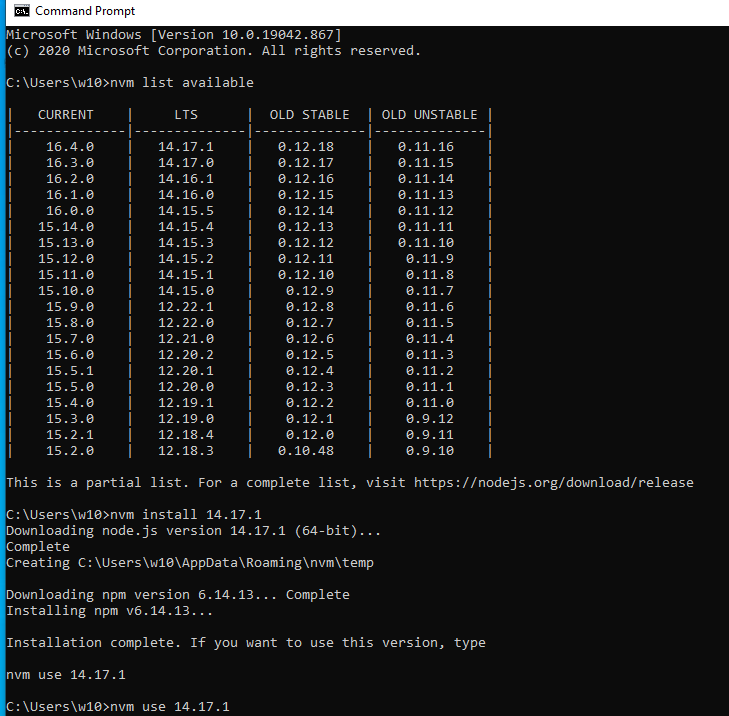

C:\Users\w10>nvm list available | CURRENT | LTS | OLD STABLE | OLD UNSTABLE | |--------------|--------------|--------------|--------------| | 16.4.0 | 14.17.1 | 0.12.18 | 0.11.16 | | 16.3.0 | 14.17.0 | 0.12.17 | 0.11.15 | | 16.2.0 | 14.16.1 | 0.12.16 | 0.11.14 | | 16.1.0 | 14.16.0 | 0.12.15 | 0.11.13 | | 16.0.0 | 14.15.5 | 0.12.14 | 0.11.12 | | 15.14.0 | 14.15.4 | 0.12.13 | 0.11.11 | | 15.13.0 | 14.15.3 | 0.12.12 | 0.11.10 | | 15.12.0 | 14.15.2 | 0.12.11 | 0.11.9 | | 15.11.0 | 14.15.1 | 0.12.10 | 0.11.8 | | 15.10.0 | 14.15.0 | 0.12.9 | 0.11.7 | | 15.9.0 | 12.22.1 | 0.12.8 | 0.11.6 | | 15.8.0 | 12.22.0 | 0.12.7 | 0.11.5 | | 15.7.0 | 12.21.0 | 0.12.6 | 0.11.4 | | 15.6.0 | 12.20.2 | 0.12.5 | 0.11.3 | | 15.5.1 | 12.20.1 | 0.12.4 | 0.11.2 | | 15.5.0 | 12.20.0 | 0.12.3 | 0.11.1 | | 15.4.0 | 12.19.1 | 0.12.2 | 0.11.0 | | 15.3.0 | 12.19.0 | 0.12.1 | 0.9.12 | | 15.2.1 | 12.18.4 | 0.12.0 | 0.9.11 | | 15.2.0 | 12.18.3 | 0.10.48 | 0.9.10 | This is a partial list. For a complete list, visit https://nodejs.org/download/release C:\Users\w10>nvm install 14.17.1 # This is the LTS version. Downloading node.js version 14.17.1 (64-bit)... Complete Creating C:\Users\w10\AppData\Roaming\nvm\temp Downloading npm version 6.14.13... Complete Installing npm v6.14.13... Installation complete. If you want to use this version, type nvm use 14.17.1 C:\Users\w10>nvm use 14.17.1 Now using node v14.17.1 (64-bit)
- so, installation is done, now what?
- maybe we can start by configuring Nginx, php ... I think, I have no idea, really.
- heheh , okay, cool, so but seriously, now?
- okay tell you what, let us start by
configuring MySQL
, so
open the Cygwin terminal and run the following commands :
$ mysql_install_db
# create system tables .
$ nano /usr/bin/sh_mysqld
# Create a script which allows,
# starting and stopping MySQL.
# Paste the following contents.
#!/bin/sh
MYSQLD="/usr/sbin/mysqld"
MYSQL_ADMIN="/usr/bin/mysqladmin"
if [ "$1" = "start" ]; then
echo "Starting MYSQLD"
$MYSQLD &
echo "Done!"
elif [ "$1" = "stop" ]; then
echo
echo "This might take a little bit of time."
echo
echo "Stopping MYSQLD, enter your mysql root password: "
$MYSQL_ADMIN -u root -p shutdown
echo "Done!"
else
echo "Valid commands for mysqld: start | stop"
fi
$ chmod +x /usr/bin/sh_mysqld
# Make this script executable.
$ sh_mysqld start
# run this command, to start mysqld
# , you can stop it by running the
# command sh_mysqld stop.
# The sh_mysqld stop will ask,
# for the mysql root user password,
# which is set in the next step.
# When prompted to allow access
# through firewall, just select
# allow access.
$ mysql_secure_installation
# secure the installation,
# and choose a password for
# the root user.
If you ve just installed MariaDB,
and you haven t set the
root password yet, the password will
be blank, so you should just press
enter here.
Enter current password for root (enter for none):
OK, successfully used password, moving on...
Setting the root password ensures
that nobody can log into the MariaDB
root user without the proper authorisation.
Set root password? [Y/n] y
New password:
Re-enter new password:
Password updated successfully!
Reloading privilege tables..
... Success!
By default, a MariaDB installation has an
anonymous user, allowing anyone
to log into MariaDB without having to
have a user account created for
them. This is intended only for testing,
and to make the installation
go a bit smoother. You should remove them
before moving into a production environment.
Remove anonymous users? [Y/n] y
... Success!
Normally, root should only be allowed to
connect from localhost . This
ensures that someone cannot guess at the
root password from the network.
Disallow root login remotely? [Y/n] y
... Success!
By default, MariaDB comes with a
database named test that anyone can
access. This is also intended only for
testing, and should be removed
before moving into a production
environment.
Remove test database and access to it? [Y/n] y
- Dropping test database...
... Success!
- Removing privileges on test database...
... Success!
Reloading the privilege tables will ensure
that all changes made so far
will take effect immediately.
Reload privilege tables now? [Y/n] y
... Success!
Cleaning up...
All done! If you ve completed all of
the above steps, your MariaDB
installation should now be secure.
Thanks for using MariaDB!

- cool, cool, cool! I like! so what now?
-
php ?
- oh okay, so using the Cygwin terminal?
$ nano /etc/php-fpm.conf
# ctrl-w to search for ;pid =
# and replace it with
pid = /var/run/php-fpm.pid
# ctrl-x , followed by 'y'
# followed by enter to exit
# and save.
$ nano /usr/bin/sh_php_fpm
# Create this script, to
# start and stop, php-fpm.
# Paste the following content.
#!/bin/sh
PHP_FPM="/usr/sbin/php-fpm"
PHP_FPM_PID="/var/run/php-fpm.pid"
if [ "$1" = "start" ]; then
echo "Starting PHP_FPM"
$PHP_FPM &
echo "Done!"
elif [ "$1" = "stop" ]; then
echo "Stopping PHP_FPM ..."
kill -9 -`cat $PHP_FPM_PID`
echo "Done!"
else
echo "Valid commands for PHP_FPM: start | stop"
fi
$ chmod +x /usr/bin/sh_php_fpm
# Make this script executable .
$ sh_php_fpm start
# starts php-fpm,
# sh_php_fpm stop can
# be used to stop it.
- okay cool, what is next?
-
nginx configuration?
- hmm, interesting, from the Cygwin terminal, run the following commands :
$ mkdir -p /var/lib/nginx/tmp
$ mkdir -p /var/log/nginx/
# create these required directories.
$ nano /usr/bin/sh_nginx
# Create this script for
# starting and stopping
# nginx.
# Paste the following content.
#!/bin/sh
NGINX="/usr/sbin/nginx"
if [ "$1" = "start" ]; then
echo "Starting NGINX"
$NGINX &
echo "Done!"
elif [ "$1" = "stop" ]; then
echo "Stopping NGINX ..."
$NGINX -s stop
echo "Done!"
else
echo "Valid commands for nginx: start | stop"
fi
$ chmod +x /usr/bin/sh_nginx
# make the script executable.
- so now, what should be done?
- well, why not
configure three websites,
that nginx should serve, one for
wordpress, one for flask, and
the other for express?
$ mv /etc/nginx/nginx.conf /etc/nginx/nginx.conf.bk
# backup old nginx configuration
$ nano /etc/nginx/nginx.conf
# Create a new nginx configuration,
# paste the following content.
worker_processes 1;
include /usr/share/nginx/modules/*.conf;
events {
worker_connections 1024;
}
http {
include mime.types;
default_type application/octet-stream;
sendfile on;
keepalive_timeout 65;
gzip on;
server { #wordpress site
listen 80;
server_name website_wp.com; #replace by your website address
root /var/www/html/website_wp; #replace by a destination of your choice
index index.php index.html index.htm;
location / {
try_files $uri $uri/ /index.php?$args;}
location ~ \.php$ {
include fastcgi.conf;
fastcgi_pass 127.0.0.1:9000;
fastcgi_param SCRIPT_FILENAME $document_root$fastcgi_script_name;
include fastcgi_params; } }
server { #express site
listen 80;
server_name website_ex.com; #replace by your website address
location / {
proxy_pass http://127.0.0.1:3000/;}}
server { #flask site
listen 80;
server_name website_fl.com; #replace by your website address
location / {
proxy_pass http://127.0.0.1:5000/;}}}
$ /usr/sbin/nginx.exe -t
# Test if the configuration files, are okay,
# and if prompted to allow nginx through the
# firewall, choose to allow access.
nginx: the configuration file /etc/nginx/nginx.conf syntax is ok
nginx: configuration file /etc/nginx/nginx.conf test is successful
$ sh_nginx start
# start nginx
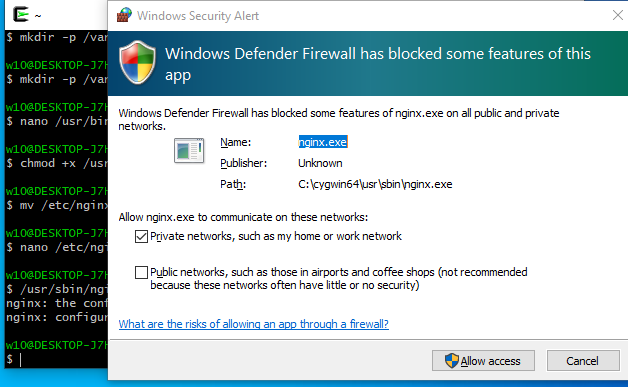
- And what now ?
- Just
edit your C:\Windows\System32\drivers\etc\hosts
file, to make your websites resolve locally, as follows:
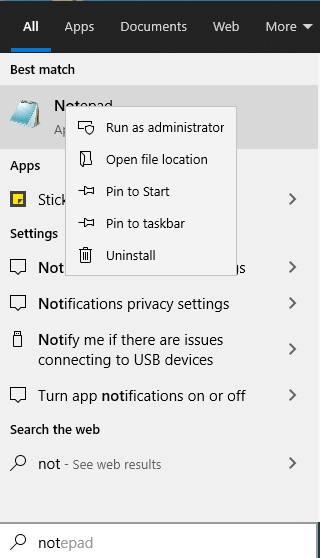

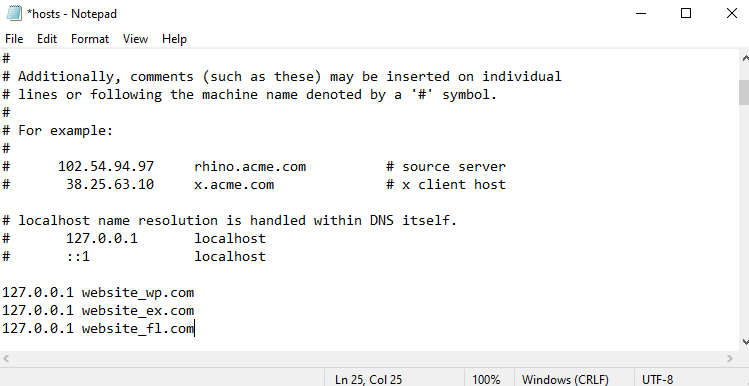
- And now?
- Well, it is time to have fun with your websites,
so let us start by
configuring express.
$ mkdir expr_app
# create your app directory.
$ cd expr_app
# cd into the created
# directory.
$ npm init
# create your package.json
# file.
This utility will walk you through
creating a package.json file.
It only covers the most common items,
and tries to guess sensible defaults.
See `npm help init` for definitive
documentation on these fields
and exactly what they do.
Use `npm install <pkg>` afterwards
to install a package and
save it as a dependency in
the package.json file.
Press ^C at any time to quit.
package name: (expr_app)
version: (1.0.0)
description:
entry point: (index.js)
test command:
git repository:
keywords:
author:
license: (ISC)
About to write to C:\cygwin64\home\w10\expr_app\package.json:
{
"name": "expr_app",
"version": "1.0.0",
"description": "",
"main": "index.js",
"scripts": {
"test": "echo \"Error: no test specified\" && exit 1"
},
"author": "",
"license": "ISC"
}
Is this OK? (yes)
$ npm install express --save
# install express
$ nano test.js
# Paste the following content
# which will be just accessible
# from http://website_ex.com/
const express = require ('express' )
const app = express ( )
const port = 3000
app .get ('/', (req, res ) => {
res .send ('Hello World!' )})
app .listen (port, ( ) => {
console .log(`Example app listening at http://localhost:${port }` )})
$ node app.js
# run your application,
# and visit the website
# http://website_ex.com/
# for confirmation.
# Do not forget, to allow
# express through your
# firewall when prompted.
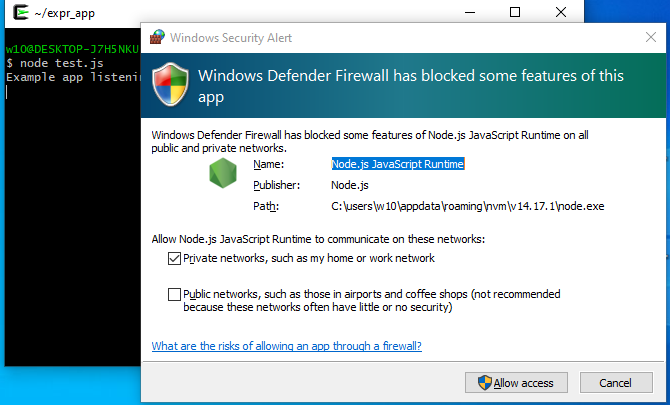

- okay cool,
what about flask
?
- hmmm, you know ... from the Cygwin terminal?
$ pip3.8 install virtualenv
# install virtualenv
$ mkdir flask_app
# create a directory for
# your web application.
$ cd flask_app/
# cd into the created
# directory.
$ virtualenv .venv
# create a virtual environment.
$ source .venv/bin/activate
# activate the virtual environment.
$ pip install Flask
# install flask
$ nano hello.py
# Create a test file,
# which can be accessed
# from website_fl.com
from flask import Flask
app = Flask(__name__)
@app.route("/")
def hello_world():
return "<p>Hello, World!</p>"
$ export FLASK_APP=hello
$ flask run
# run your flaks app,
# and visit your website
# http://website_fl.com/


- okay,
wordpress i guess
... yeh, I know, i know, the terminal...
$ mkdir -p /var/www/html/website_wp # create your wordpress website # directory, the one configured # under nginx.conf $ cd /var/www/html/website_wp # cd into the created directory. $ curl -o latest.tar.gz https://wordpress.org/latest.tar.gz # download latest wordpress # setup files. $ tar -xzf latest.tar.gz # extract the downloaded archive. $ mv wordpress/* . # move the extracted data to # the created folder, root # directory. $ rm -r wordpress/ # remove the empty directory $ mysql -u root -p # connect to mysql, enter your # password when prompted. Enter password: CREATE DATABASE wordpress_db; # Create a database, you can # change wordpress_db for your # liking. CREATE USER 'wordpress_u'@'localhost' IDENTIFIED BY 'password'; # create a user, you can change # wordpress_u for anything you # like, and password for a # password of your choice. GRANT ALL PRIVILEGES ON wordpress_db.* TO 'wordpress_u'@'localhost'; # grant privileges for the # wordpress_db to the wordpress_u FLUSH PRIVILEGES; # flush the privileges EXIT # exit your connection. $ cp wp-config-sample.php wp-config.php # create a wordpress configuration # file. $ nano wp-config.php # edit the wordpress configuration # file, so that you define DB_NAME, # DB_USER, DB_PASSWORD, as chosen # earlier. # Additionally, make sure that # DB_HOST, and FS_METHOD are # defined as shown. /** MySQL database */ define( 'DB_NAME', 'wordpress_db' ); /** MySQL database username */ define( 'DB_USER', 'wordpress_u' ); /** MySQL database password */ define( 'DB_PASSWORD', 'password' ); /** MySQL hostname */ define( 'DB_HOST', '127.0.0.1' ); define( 'FS_METHOD', 'direct' );
- once this is done, we just must
visit the address configured in nginx,
for example in this case
http://website_wp.com and follow the instructions.

